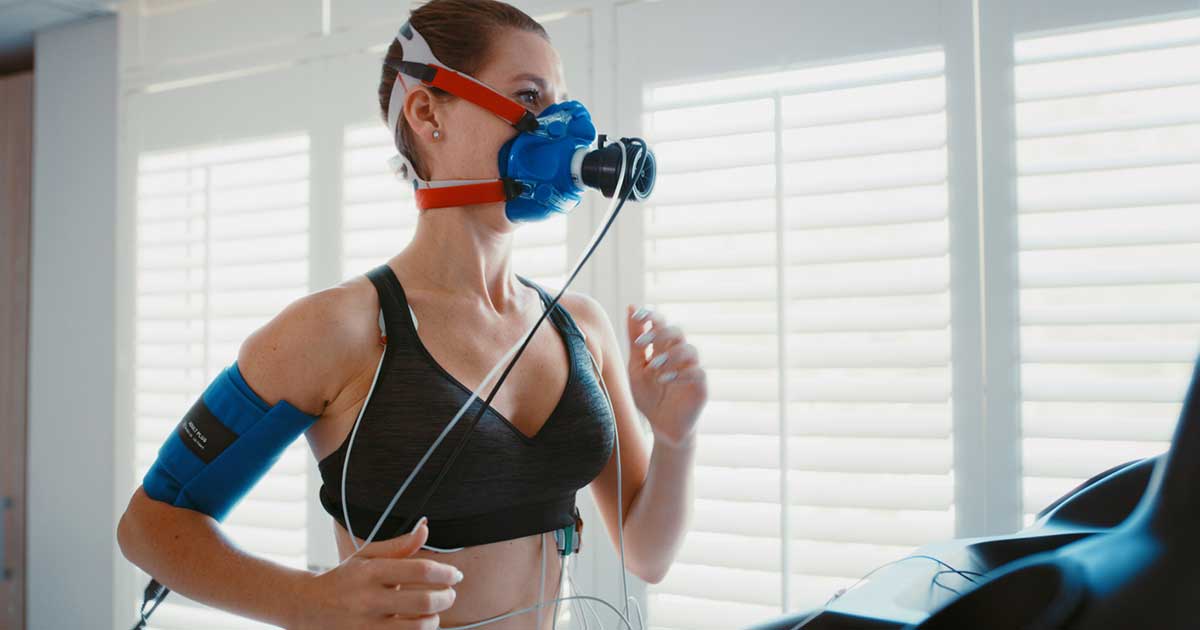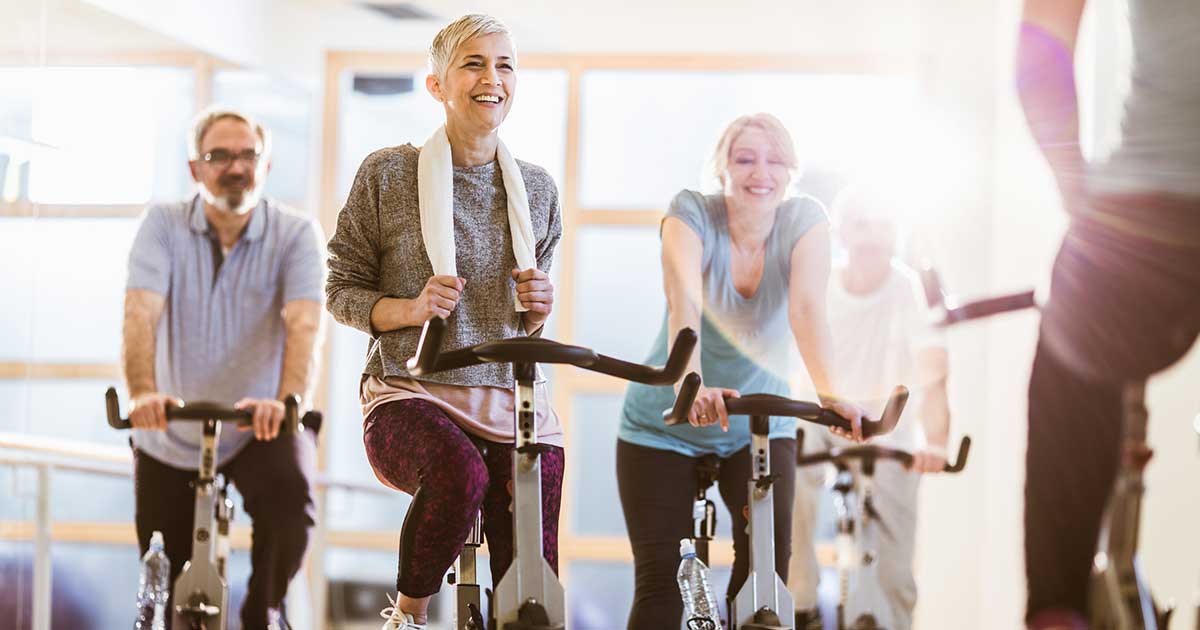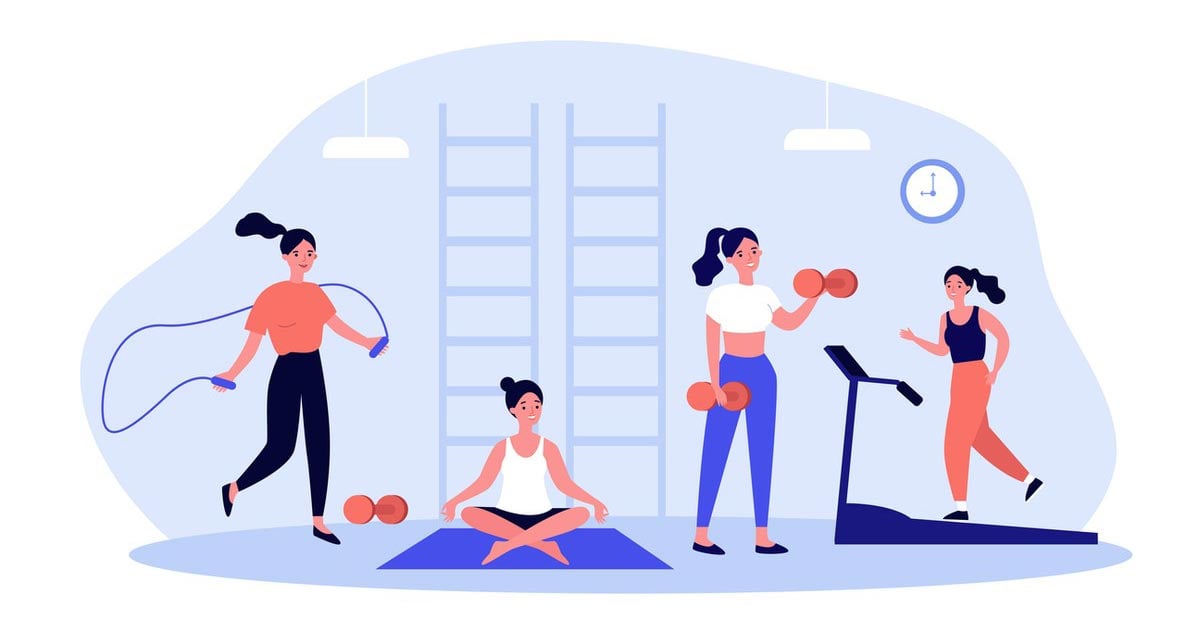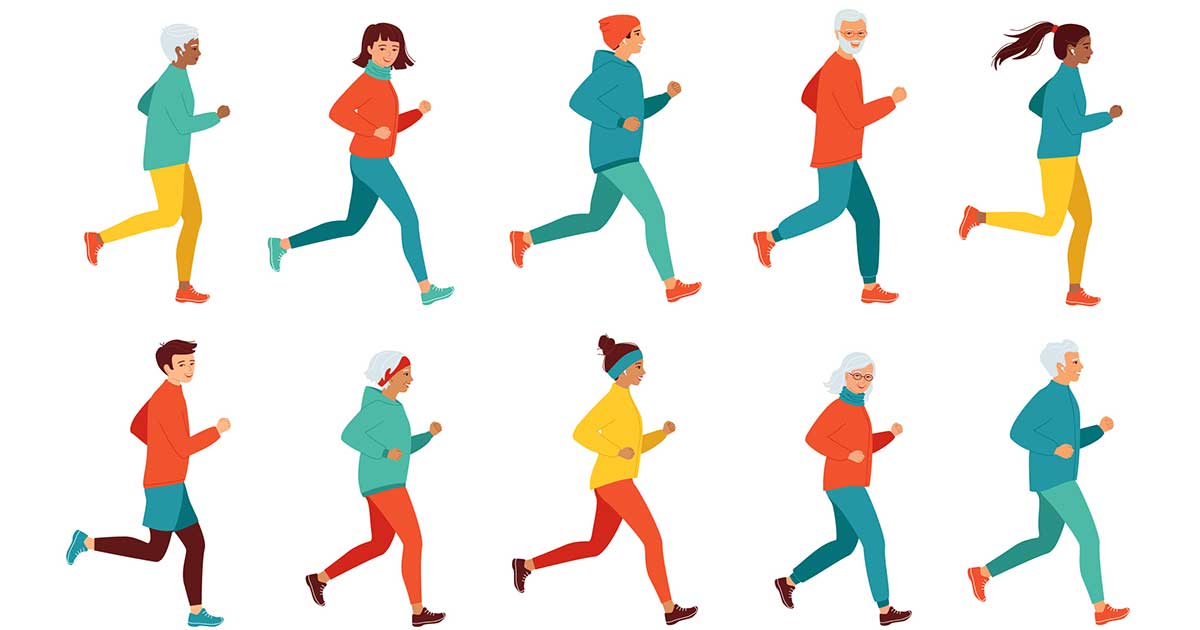
Advice to improve your movement, fitness, and overall health from the #1 in orthopedics in the U.S.
HIIT for Seniors: How to Up the Intensity of Your Workouts
Have you ever heard of high-intensity interval training (HIIT) and wondered what it is? It sounds complicated, but it doesn’t have to be.
Advice to improve your movement, fitness, and overall health from the #1 in orthopedics in the U.S.
HIIT is a type of workout that switches between high effort and recovery periods. HIIT can be modified to meet your needs and fitness level. This makes it accessible to adults of all ages. As HSS exercise physiologist Kelyssa Hall explains, “the goal is to switch between high and low levels of effort based on which activity level is right for you.”

This back-and-forth is what makes HIIT different from other workouts. For example, in circuit workouts, you complete an exercise for a set time or number of repetitions. HIIT is focused on your effort during a set amount of time, not just completing it.
There are many ways to do a HIIT workout. It can be done with little or no equipment or in any style of exercise you like. If you like to bike, for instance, you can ride for 30 seconds at a high effort and 90 seconds at a lower level of effort to recover.
Will HIIT improve my health?
HIIT is effective in improving heart health. In fact, it can improve heart health in a shorter time when compared to other types of exercise. HIIT can also improve the maximum volume of oxygen the body can use, known as VO2 max. The better your VO2 max, the better your heart can pump blood. This also means it will be harder to get out of breath. These are protective factors against heart disease.
Additionally, HIIT workouts may:
- increase muscle strength
- improve cholesterol
- lower blood sugar and improve insulin resistance
- boost metabolism
- increase ability to do exercise that involves pushing your heart rate
- lower blood pressure
- help with weight loss
Is HIIT safe for me?
Of course, you should always check with your doctor before starting any exercise program. But HIIT is safe for adults of all ages and may well be a great option for you. Some general guidelines:
- Pick an exercise that is safe for you. Older adults may want to choose low-impact exercises like walking or using a stationary bike to prevent injury. If you’re at risk of falling, be sure to consider safety and avoid exercises that may make you unsteady, like running on a treadmill.
- Variety is best. Alternate HIIT workouts with other types to prevent overuse injuries. HIIT workouts should be spread out throughout the week with one to two days in between each workout to allow time to recover.
- No matter what the exercise, it’s important to make sure you use proper form. Poor form can put you at risk of injury. Correct form will have the best results. If you aren’t sure where to start, schedule a session with an exercise physiologist or trainer.
What intensity is right for me?
The high-intensity interval should feel challenging. But it’s important to start slow. Think about intensity as a ten-point scale, with zero as no effort and ten as the hardest effort. Start with high effort at a three and recovery at a two. For example:
- Start at an intensity of one with an easy walking warm-up.
- Walk faster or uphill to increase the intensity to a three. You should be breathing heavily but still be able to maintain a conversation. Stay here for one to two minutes.
- Move into the recovery period at an effort of two for two to three minutes.
- Move between these high and low effort levels for a period of 30 minutes.
“As you continue on your HIIT journey, you can slowly increase effort during the high-intensity interval,” Hall explains, adding that it is important that high intensity feels challenging and uncomfortable but not dangerous to your health. Ultimately, you want your high effort to reach around an eight and your recovery period to around a four.
How do I get started?
- HIIT can be done anywhere—at a gym, in your home or at a park outside. Check your space for any safety concerns.
- Always warm up before starting.
- Plan your workout before you begin. You can follow along with a written workout, audio workout or a video. This will make your workout more efficient.
- Drink water to stay hydrated throughout your workout.
- Start with a familiar exercise for you. This can be walking, cycling or body weight exercises.
- Use a timer to keep track of your intervals.
- Start slow and increase your effort gradually.
Whether at home or at a gym, try these sample HIIT workouts to get started:
- No Equipment Workout: Complete the following exercises for 30 seconds each—20 seconds at a higher intensity and a ten-second recovery. Repeat for four rounds each.
- Walk down or modified push-ups
- Squats and kicks or sit-to-stands using a chair
- Reverse lunges or split squats
- Three punches and two high knee pulls or marching with no weight overhead press
- Walking Workout: Walk outside up a hill or on a treadmill.
- Work interval: 30 seconds of fast walking at a speed or incline that suits your fitness level
- Recovery interval: 90 seconds of slower walking
- Repeat four to six times
- Running Workout: Run outside around your neighborhood or on a treadmill.
- Work interval: 30 seconds of high effort at a speed that suits your fitness level
- Recovery interval: 90 seconds of light jogging or walking
- Repeat four to six times
- Cycling: Try on your own bike outdoors or a stationary bike.
- Work interval: 30 seconds of high effort at a cycling speed or incline that suits your fitness level
- Recovery interval: 90 seconds of light cycling
- Repeat four to six times
- Swimming:
- Work interval: one lap of high effort at a swimming speed that suits your fitness level
- Recovery interval: one lap slow swim
- Repeat four to six times
Adding HIIT to your exercise routine can provide variety and result in health benefits. As always, be sure to start slow and check with your doctor before starting a new exercise program.
Published 12/15/2021


